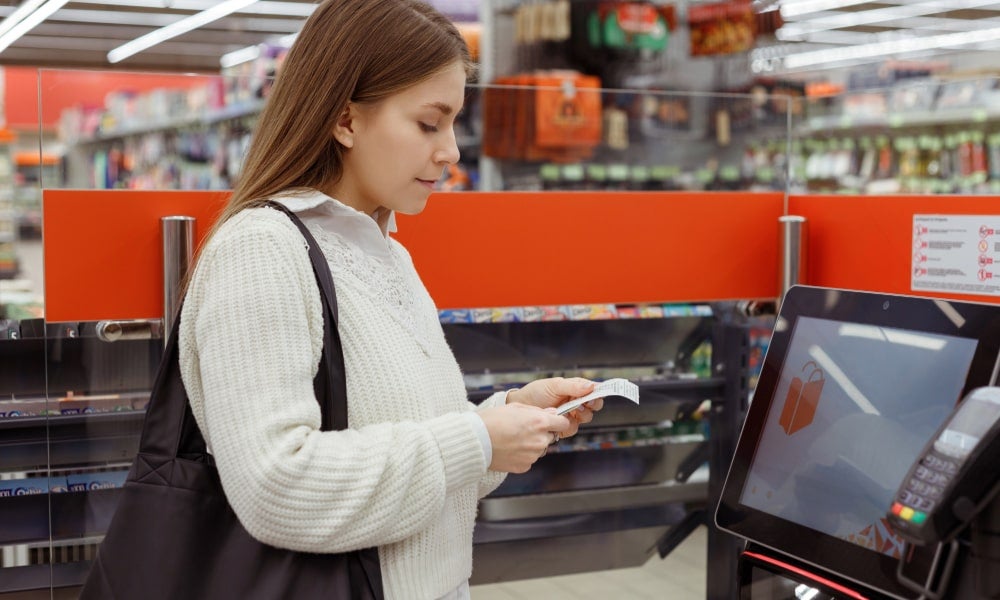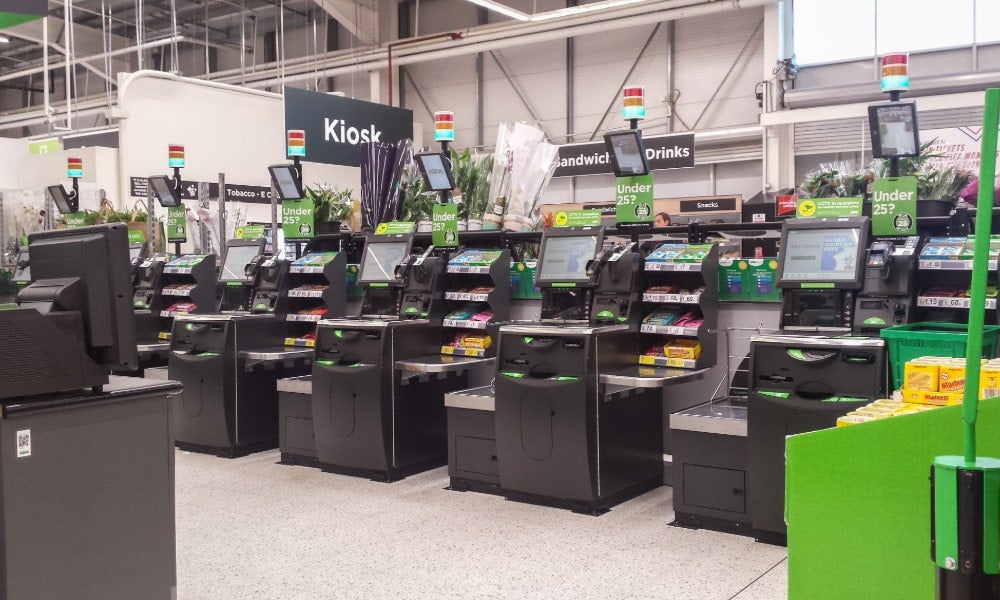Is self-checkout a failed experiment for retailers?
Wharton’s Santiago Gallino discusses the pros and cons of self-checkout, which has become more popular as stores look for ways to cut labor costs
This article is republished with permission from Knowledge @ Wharton, the online business journal of the Wharton School at the University of Pennsylvania, which owns the copyright to this content.
Few aspects of the retail experience get shoppers as riled as self-checkout. Some people love the speed, convenience, and social distancing. Others complain about finicky machines that don’t scan correctly and a lack of staff to help them. Last fall, Booths became the first U.K. supermarket chain to get rid of self-checkout, citing overwhelming complaints from frustrated shoppers.
“We’re really proud that we’re moving largely to a place where our customers are served by people, by human beings, so rather than artificial intelligence, we’re going for actual intelligence,” the company said.
Booths’ decision made headlines stateside, adding fuel to the burning debate over self-checkout. But Wharton Operations, Information and Decisions Professor, Santiago Gallino, thinks it’s unlikely that many American stores will follow suit. Love it or hate it, he said, self-checkout is here to stay. “For retailers, it’s a combination of cutting labour and adding flexibility,” he said. “It’s not to make checkout more efficient. They are basically transferring the labour to the customer.”

Gallino said retailers are constantly evaluating where and how to trim expenses, and the biggest categories are inventory and staff. That’s especially true for grocery stores, which generally have razor-thin profit margins and significant inventory risk. Gallino said it makes sense for supermarkets to install self-checkout lanes to handle busy times and augment a smaller staff. Even Booths said it was keeping self-checkout machines in two of their busiest stores.
“I don’t mind doing it myself,” the Professor said. “If I see long lines in the regular checkout, it’s a way for me to get out faster. But I confess sometimes I regret it because they don’t usually work that well. It’s definitely not a flawless system.”
Gallino said retailers must figure out how to walk the line between convenience and annoyance. They also need to know their customer. A department store shopper expects some level of personal service when making a purchase, while someone running into the supermarket for eggs probably doesn’t care. “If you are understaffing and forcing customers to use self-checkout, then you start to annoy your customers, and this is going to backfire,” he said. “Your customers will stop going, especially if it doesn’t have a connection to lower prices.”
Read more: Supermarket surveillance: why we dislike it and what stores should do
Why some are calling self-checkout a failed experiment
Some form of self-checkout has been around for decades, but recent improvements in technology have sped up adoption. One study found it was the dominant form of checkout at grocery stores, accounting for 55 per cent of transactions in 2022.
The ubiquity has come with a new problem: shrink. Defined as inventory loss due to theft and other factors, shrink at self-checkout is rising because automation makes it easier for shoplifters to help themselves. A survey last year by LendingTree found that 15 per cent of self-checkout users admitted to stealing, and 44 per cent planned to do it again. Even a majority of the 21 per cent who admitted to taking an item accidentally didn’t correct the mistake.
Sophisticated monitoring systems aren’t stopping thieves, who have learned to get around both the cameras, the sensitive scales, and the overworked attendant. One self-described “self-checkout swiper” wrote a blog on techniques to steal from supermarkets, including keying in product numbers for cheaper items, scanning products with the barcode facing up or covered, scanning fake barcodes, and using bulky items to obscure the view of smaller, expensive items.

The shrink rate from self-checkout is estimated between 3.5 per cent and 4 per cent, compared with a rate of less than 1 per cent for cashiers. It’s so significant that supermarket chain Wegmans announced in 2022 that it would stop self-checkout because of unspecified losses from shoplifting. “It’s facilitating errors and, in some cases, the steal,” Gallino said. “In some cases, it’s an unintended steal, but you’re now creating an inventory information problem. Now, there is additional noise in the system. It’s hard to replenish and to know what is in the store.”
For grocers, such information is critical. Gallino said the grocery executives he talks to understand shrink and inventory inaccuracy, and they take these factors into consideration. What’s harder for them to quantify, he said, is customer loyalty. Are shoppers leaving because of a lack of staff or a clunky machine, or is there some other reason?
“There are situations where self-checkout is definitely a plus,” he said, citing a train station ticket kiosk as an example. “In other cases, you start to ask how much pain the customer is willing to take, and I think that’s where many retailers aren’t careful about quantifying.”
Subscribe to BusinessThink for the latest research, analysis and insights from UNSW Business School
The future of self-checkout
Gallino pointed out another important consideration for retailers using self-checkout: They are missing perhaps the only chance to gather valuable feedback from the customer in real time. When a sales associate asks, “Did you find everything you needed today?” the answer helps store managers know what they are doing right and wrong.
“It’s an opportunity to get quick and accurate information,” Gallino said. “That contact point can be critical, and you’re losing that completely.”
Despite its flaws, Gallino thinks self-checkout isn’t going anywhere. But he is hopeful that retailers will give more consideration to how they deploy it. “I think we’re going to see these in the future, for sure,” he said. “At the same time, I think some retailers are going to be smarter about when and how they use it.”

